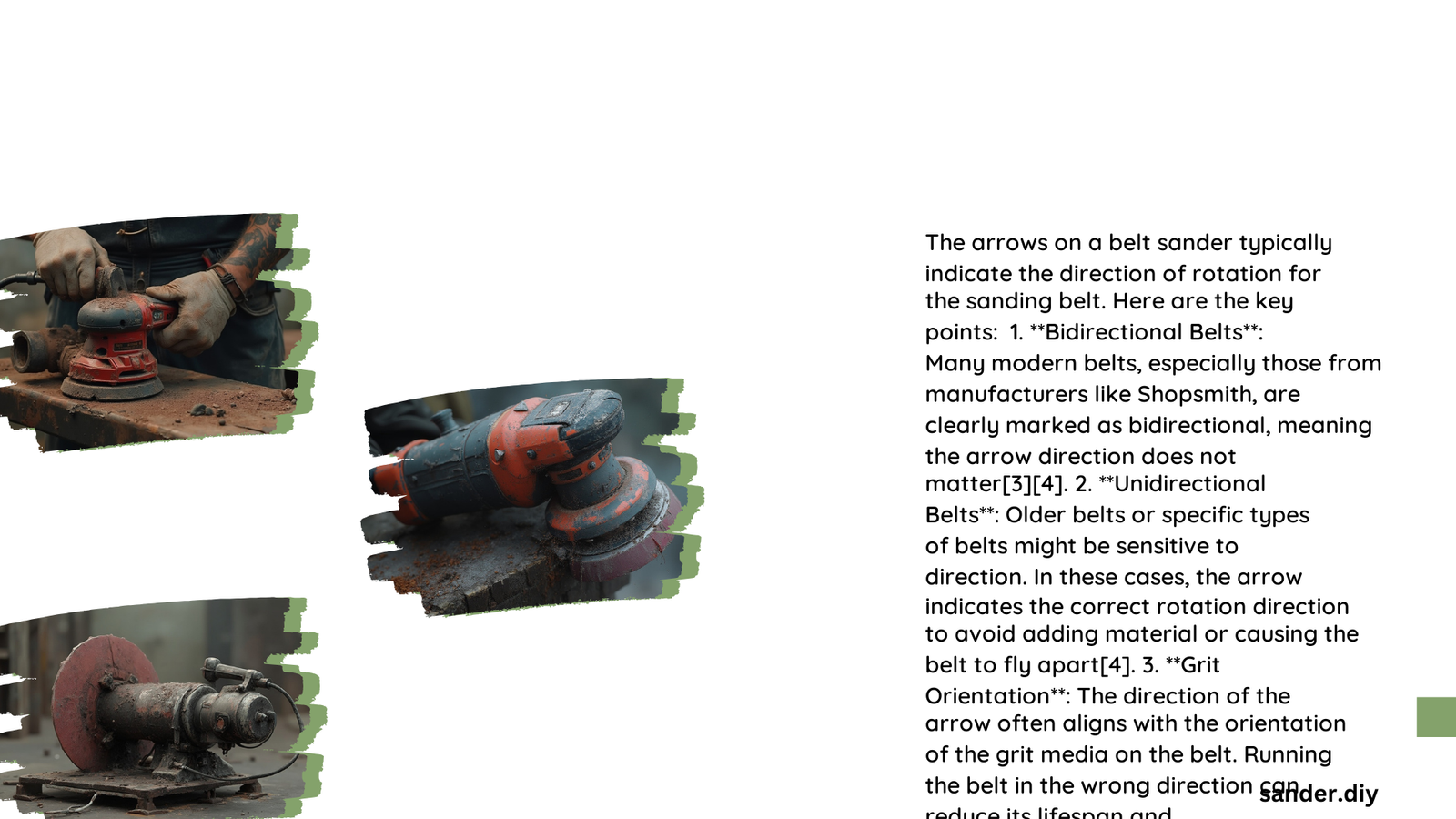Belt sanders are precision tools where understanding arrow direction can significantly impact performance and equipment longevity. The arrows on sanding belts provide crucial guidance for proper installation, indicating the recommended rotation direction and ensuring optimal sanding efficiency. While some belts are bi-directional, others require strict adherence to the arrow’s orientation to prevent potential damage and maintain consistent sanding quality.
What Do Arrows Indicate on Sanding Belts?
Sanding belt arrows serve multiple critical functions in tool performance. These directional indicators help users understand the recommended belt orientation and rotation, which can vary depending on the specific belt design and manufacturing technique.
Why Arrow Direction Matters?
| Belt Type | Arrow Significance | Potential Consequences |
|---|---|---|
| Overlapped Joint Belts | Critical Alignment | Uneven Sanding, Potential Equipment Damage |
| Bi-Directional Belts | Less Critical | Minimal Performance Impact |
How to Interpret Belt Sander Arrows?
- Examine Belt Joint Type
- Check for overlapped or butt joint design
- Identify manufacturing specifications
-
Inspect arrow placement and direction
-
Understand Rotation Requirements
- Match arrow direction with sander’s roller movement
- Ensure smooth belt tracking
- Prevent potential slippage or misalignment
What Happens When Arrows Are Ignored?
Disregarding arrow directions can lead to several potential issues:
- Increased belt wear and tear
- Reduced sanding efficiency
- Potential equipment stress
- Compromised surface finish quality
Expert Tips for Belt Orientation
Professional woodworkers recommend:
- Always inspect belt before installation
- Verify manufacturer’s specific guidelines
- Use proper tracking adjustments
- Replace belts showing signs of uneven wear
Technical Considerations for Belt Sander Performance

Modern sanding belts, particularly those with high-strength tape butt joints, offer more flexibility in orientation. However, precision remains key in achieving optimal results.
Factors Influencing Belt Performance
- Grit composition
- Joint manufacturing technique
- Sander roller alignment
- Consistent tension application
Recommended Best Practices
- Rotate belts periodically to distribute wear
- Maintain consistent sander maintenance
- Use appropriate belt tension
- Store belts in controlled environments
Professional Insights
Experienced craftsmen emphasize that while arrow direction provides guidance, understanding your specific equipment’s requirements is paramount. Each sander model might have unique characteristics affecting belt orientation.
When to Seek Professional Advice
- Unusual belt wear patterns
- Inconsistent sanding results
- Equipment-specific installation challenges
Final Recommendations
- Always consult your specific sander’s manual
- Inspect belts before each use
- Follow manufacturer’s arrow direction guidelines
- Prioritize equipment maintenance
Pro Tip: When in doubt, contact the manufacturer or a professional tool technician for precise guidance tailored to your specific belt sander model.
Conclusion
Understanding which way arrows point on a belt sander involves more than simple directional alignment. It requires a comprehensive approach to tool maintenance, performance optimization, and precision craftsmanship.
